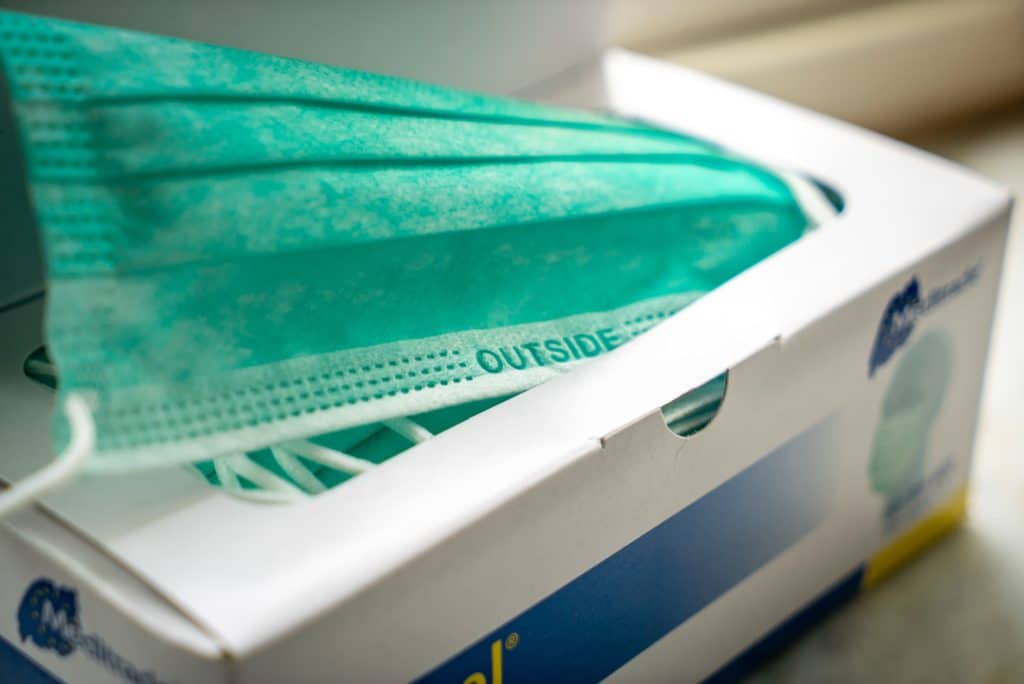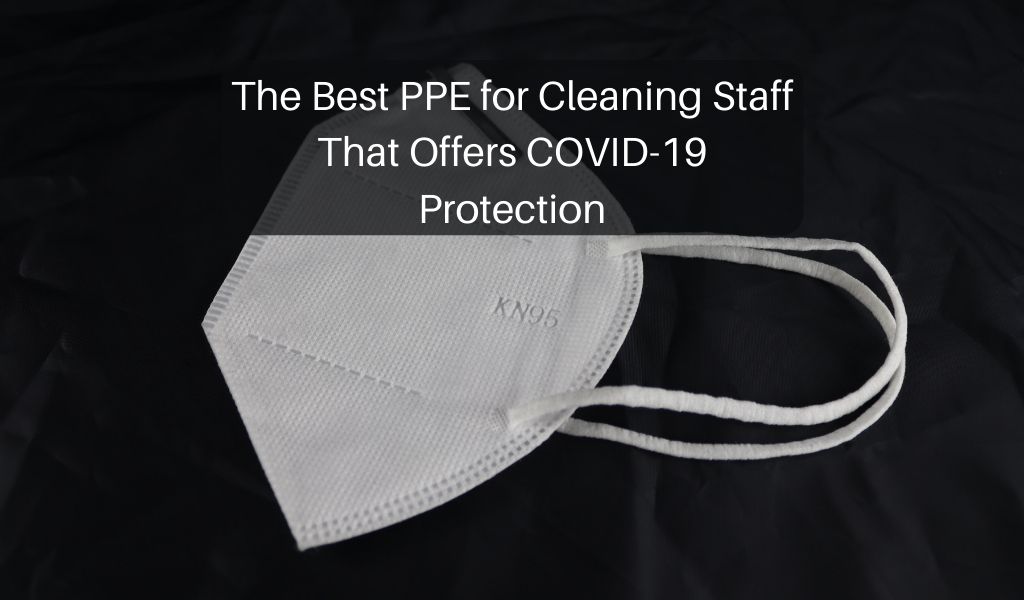The finish line is in sight, but we aren’t there yet. Here is a list of the best PPE for cleaning staff to keep them safe from COVID-19.
Personal protective equipment (PPE) is nothing new in the cleaning industry. At the very least, latex (or non-latex) gloves have been part of your inventory for years. But with the arrival of COVID-19, the need for such equipment has only increased, and it can be hard to choose the best PPE for cleaning staff with so many options out there.
Fortunately, identifying the best PPE for cleaning staff during the pandemic can be boiled down to a single rule of thumb: Keep it simple. Yes, there are many different types of equipment from many different brands, but at the end of the day, most of those differences are more relevant for healthcare facilities. Janitorial workers, on the other hand, will usually be fine with much of the standard equipment they’ve always used. What’s more important isn’t which equipment they use, but how they use it.
Keeping track of your PPE inventory has never been easier, thanks to Janitorial Manager. Learn more about inventory management and dozens of other great features by accepting your free demo today!

You may already have the best PPE for cleaning staff
Any time a custodial team is tasked with eliminating germs for a job site, they hopefully take precautions and use PPE. According to Dr. Susanne Schwartz, Director of the Office of Strategic Partnerships and Technology Innovation at the Federal Drug Administration (FDA), “When used properly, PPE acts as a barrier between SARS-CoV-2 and your skin, mouth, nose, or eyes.”
The key phrase here is “when used properly.” If your cleaning staff doesn’t follow the instructions on the effective use of any PPE equipment, the protective drops substantially. Even removing your PPE only 10% or less of the time in a contaminated area “significantly reduces the protective effect.”
We’ll address the correct usage of each item individually, but first, let’s get into more detail about the best PPE for cleaning staff, specifically in regards to COVID-19.
Face masks
Virtually all the science available suggests that face masks offer the greatest protection from COVID-19 in most settings.
“It’s really noncontroversial from a science standpoint,” says Luis Ostrosky, M.D., a spokesperson from the Infection Diseases Society of America (IDSA). “There’s no doubt that [they work].”
The question nagging most janitorial business owners and managers is, which face masks are considered the best PPE for cleaning staff? There are standard NIOSH-approved N95 respirators—previously used almost exclusively in healthcare settings—FDA-approved surgical masks, and surgical N95 respirators, among others.
In short, the standard N95 prevents inhaling infectious particles, while FDA surgical masks prevent the spread of exhaled particles, and surgical N95s do both (unless they have exhalation valves). It may seem logical, then, to think that the surgical N95 is the best PPE for cleaning staff against COVID-19.
However, there’s a significant shortage of such masks in the United States. Since infectious COVID-19 particles don’t last very long on surfaces, it’s more critical for cleaning professionals to protect against what they exhale if any of them are infected and asymptomatic—thought to be one of the primary methods of transmission.
So while the N95s seem attractive options, the most appropriate (and incidentally, most affordable) mask option is a standard FDA-approved surgical mask. Even if you have access to and can afford surgical N95s, the best thing to do at this time is to leave them for those who are in direct contact with diagnosed or potential COVID-19 patients. There is some newer evidence that KN95 masks are highly protective, as well. They’re also more available and less expensive than N95s.
All of that aside, the best mask is one you can wear throughout the day, whether that’s a KN95, a triple-layer cotton mask, or double masking. No matter which mask you choose, users must be trained to wear them properly for them to be effective. The mask should cover both the nose and the mouth at all times, and should fit snugly against the face. Face coverings should be changed if they become soiled or potentially contaminated, and between each worksite.
Gloves
Latex, nitrile, and other disposable protective gloves can also be some of the best PPE for cleaning staff, but be careful of the false sense of security they can offer. Some people wear protective gloves and become careless, touching surfaces and then still touching their faces without thinking about it. This can actually increase the risk of infection.
To use protective gloves properly, the wearer should change them every time they move to a new room or job site, washing their hands or using COVID-effective hand sanitizers between uses. Gloves should be removed inside-out and discarded immediately after use. Employees should never touch their faces, bare skin, or mobile devices with gloves on, nor should they wear the same pair for extended periods.
Eye protection
The use of goggles and face shields has become increasingly common, but these may not be the best PPE for cleaning staff. Since most airborne particles only linger at face level for a few minutes, there’s little chance that janitorial staff will become infected through eye contact. However, suppose workers want to take this extra precaution. In that case, safety goggles are typically more effective than face shields. If there are infectious particles in the air near a person, their body heat can cause the particles to rise back up again underneath the face shield, increasing the risk of infection. Face masks are generally more effective when there’s a risk of high-impact bodily fluid contact, such as during surgery.
It’s worth noting that goggles alone don’t offer much protection against COVID-19 and other germs. If your employees do wear safety goggles, they should do so in conjunction with face masks. AKA Goggles and face shields are not a substitute for proper masking.
Other PPE
Gowns, full-body suits, and other PPE probably won’t provide much more (if any) protection to janitorial workers, so public health professionals recommend reserving those for people in direct contact with COVID-19 patients or those who’ve potentially been infected.
And remember, along with face masks, the best PPE for cleaning staff isn’t equipment at all. It’s simply remembering to wash your hands thoroughly and regularly, especially while on the job.
Of course, this doesn’t account for the times when your team is working with chemicals or in other conditions that may require PPE. Again, the best PPE you can use is the PPE you wear properly at any time it is indicated.
Custodial management software like Janitorial Manager can help with contact tracing and other COVID-19 protection protocols. Find out more with your free demo!

